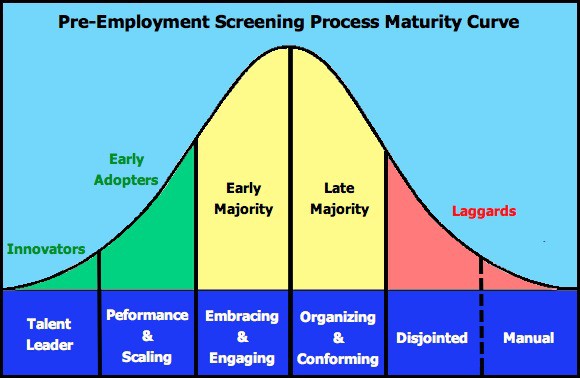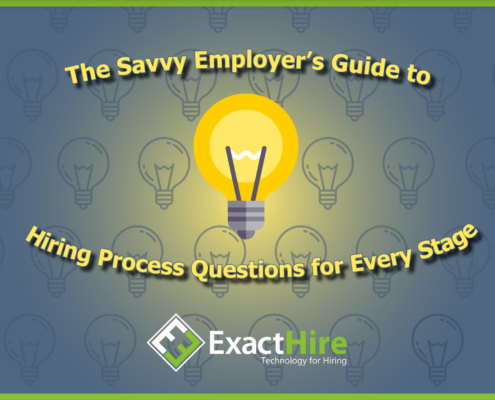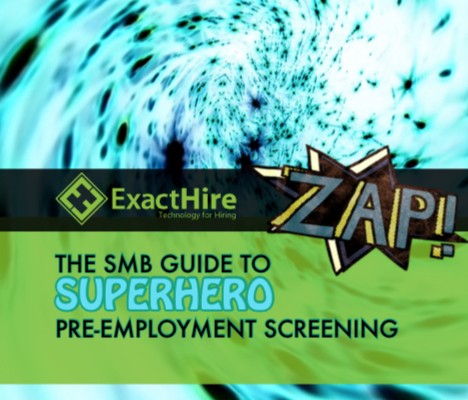Common Problems With The Pre-Employment Screening Process
You’re in the homestretch of filling a vacant position within your organization. You have at least one candidate you are confident will help meet, or possibly exceed, your organization’s goals and objectives in this vacant role.
The last item before crossing the finish line: pre-employment screening.
Sometimes, pre-employment screening can feel like you have hit “the wall” over the course of a marathon instead of feeling the elation of crossing the finish line. There are plenty of problems that can present themselves as obstacles to a smooth pre-employment screening process. However, there are ways to overcome these issues. In this blog, I’ll review some ways to ensure you finish the course with a win…but first let me offer my definition of what the screening process includes.
What Is Pre-Employment Screening?
Pre-employment screening is the process of researching and investigating a potential hire’s background for possible red-lights that could affect: 1) employee performance; and/or, 2) the organization’s safety and/or reputation if this person was hired. Pre-employment screening can include conducting a criminal history background check, drug test, employment assessments and/or contacting reference information submitted by the potential hire to acquire additional information about the person.
Contacting references is a key component of pre-employment screening in the vast majority of professional fields. Communicating with a candidate’s references can give the hiring manager and/or selection committee valuable insight on the potential hire’s past behaviors. Some of those behaviors may be ideal and complement your organization’s culture…while other behaviors may not. Unfortunately, there is no crystal ball to predict how a new hire will acclimate to your organization’s culture, but getting perspectives from references can help provide some insight. According to a 2013 CareerBuilder survey, hiring the wrong individual could cost approximately $50,000 to an organization. If there is a cycle of hiring poorly fitting individuals, the negative financial impact will continue in a downward spiral.
The Reference Chasing Game
When a candidate provides references during the interview process, the following information is often included: Reference Name and Title; Reference Email; Reference Contact Phone Number; and, possibly Number of Years Known and/or the Relationship to the Potential Hire. With this information, the hiring manager can start the communication contact process.
Does this sound familiar?
Pick up the phone and call the reference…
Leave a Message…
Wait patiently for a return call…
Send an email…
Wait patiently for a return email…
Attempt to contact the reference again via both methods if too much time passes…
Tick Tock Tick Tock.
Time is of the essence! There is a job to fill! “Tick tock tick tock” are the sounds that the hiring manager might be hearing. The “tick tock” is not just for the waiting game of collecting reference data. It is also reflective of the downtime that is occurring within the organization since that job opening is still vacant. Most likely, another person is trying to cover that role in addition to fulfilling to his/her own role, too. And, it’s not just “tick tock” being heard; it’s the sound of a cash register getting depleted during this waiting game, too. Vacant positions cost money, especially when keeping downtime and other co-workers’ overtime costs in mind.
Issues With Reference Feedback
So you’ve made contact with a reference–great news! It’s time to ask questions relating to the performance and job duties of the potential hire, and to learn more about the duration and type of work relationship between the potential hire and the reference contact. Acquiring this information might not be as easy as it sounds. Some references are hesitant to give meaningful feedback in fear of legal liability or hurting the candidate’s feelings.
Additionally, if reference questions are not phrased to ask for specific information and examples, the reference provider might give general statements that are too subjective and not helpful in providing a clear view of the potential hire. It is important for the reference checker to be consistent with the questions (s)he asks and the manner in which the feedback is documented. If the feedback is documented inconsistently, the feedback can be skewed and hard to interpret by the hiring manager and/or others on the selection team.
Automated Pre-Employment Screening Solutions
Paperless reference checking software provides organizations with an efficient means to collect reference information. Organizations can ask a potential hire to provide contact information for individuals willing to serve as the potential hire’s references. The references would be asked to provide anonymous feedback regarding the potential hire on a variety of competencies selected by the hiring organization. By submitting anonymous feedback, individuals serving as references are more comfortable providing constructive criticism and testimonials.
References click the link in an email invitation and are informed that their feedback will not be shared with the potential hire and that their responses will be aggregated with other references. This promotes a stronger feeling of anonymity and leads to more honest feedback. Reference check software provides a consistent means to collect and evaluate information provided by the potential hires’ references.
Criminal history background checks and drug tests are additional ways for an organization to screen potential hires. It is crucial that Pre-Employment Screening checks, especially criminal history and drug test results, are kept confidential and secure. ExactHire offers confidential, paperless methods that can be integrated within our HireCentric applicant tracking system to collect highly sensitive, key information that you need to make that crucial hiring decision with more confidence.
Behavioral and cognitive employee assessments can also yield tremendous insight into the skills and abilities of a potential hire. Also, role-specific assessments, such as Microsoft Excel testing for financial roles, can provide tangible results to see how well a potential hire can use a specific tool that is a key resource for daily use in that particular job role. When choosing any type of assessment, thoroughly research the platform to learn how the assessment data is collected and measured.
Having access to these types of pre-employment screening tools can help an organization overcome problems that frequent the traditional pre-employment screening process. Filling a vacant role can lead to some apprehension, but with the different data collection options that exist through ExactHire, we can help alleviate that apprehension. When you conduct pre-employment screening using these tools, know that the confidential and secure information you acquire is based on the neutral objective you have–hiring the right fit for the role and the organization as a whole.
For more information about any of our hiring software tools, please visit our resources section or contact ExactHire today!
Image credit: screen door ![]() by bradleygee (contact)
by bradleygee (contact)





